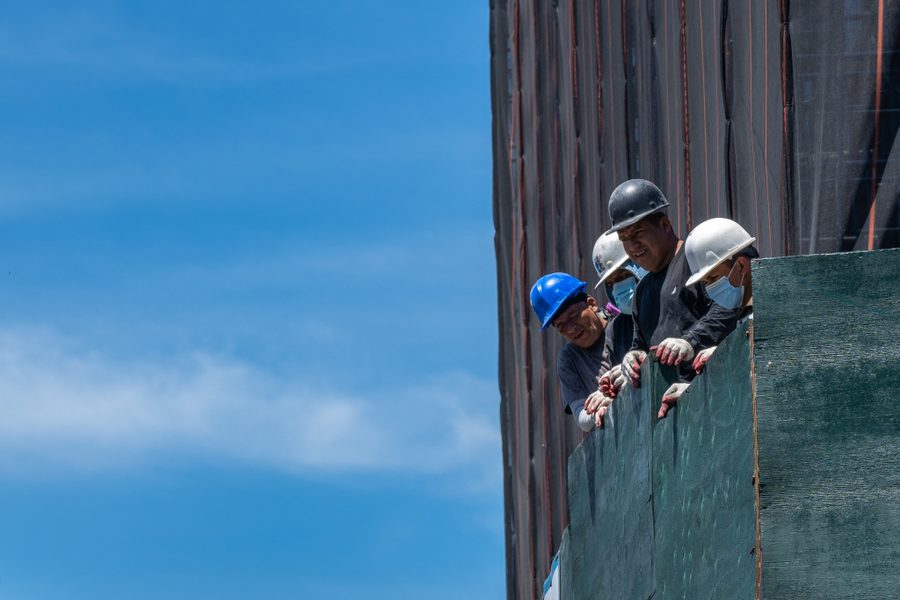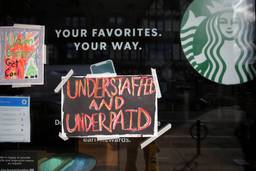The Return of the Construction Industry Has Brought a Surge of Immigrant Worker Deaths
The rush to keep building through the pandemic has compounded the risks for construction workers.
Maurizio Guerrero

The recovery of the construction industry in the United States after the lockdowns imposed by the pandemic has been remarkable. Activity in the industry, based on data on workers’ hours, returned since May to pre-lockdown levels in 34 states, and construction spending for the first six months of 2020 was 5% higher than the same period last year.
Yet the rush to keep on building despite the pandemic has compounded the risks for construction workers, who account for one in five workplace deaths in the United States. The dangers are even higher for non-unionized day laborers, the vast majority of whom are immigrants from Latin America.
“Sadly, employers see us as disposable objects,” says Guadalupe Jiménez, a 48-year-old construction worker who emigrated from Mexico to New York City four years ago. Jiménez thinks that real estate developers are now in a hurry.
“They want to get the job done soon and they don’t care if you have protective equipment,” she says. “What they want is production, production.”
Construction was allowed to resume in New York City on June 8. Within six weeks, two day laborers were killed (Mario Salas and Wilson Patricio López Flores, both from Latin America) in separate incidents, and three were injured.
“There are people from South America who come here after pawning their house deeds,” says Eduardo Redwood, a 60-year-old Ecuadorian immigrant who arrived in the United States two decades ago. “But instead of coming here to work to make a living, they come here to die.”
Construction workers’ deaths have spiked across the United States. In 2018, the most recent year for which figures are available, 1,008 workers were killed nationwide — the highest figure since at least 2008 — compared to 971 in 2017. The New York Committee for Occupational Safety and Health, a nonprofit that issues what advocates consider a reliable and consolidated annual tally of deaths in the construction industry, reported that 22 construction workers died in the city in 2018, an increase of 10% compared to 2017.
NYCOSH also reported that 86% of workers who died on private worksites in 2017 were non-union. If history is any guide, many of those workers were presumably undocumented immigrants.
New York state senator Jessica Ramos says that the vast majority of deaths at construction sites in the state are of undocumented immigrants. Many of those deaths are not consolidated in a single state registry.
Salas, a 59-year-old Mexican immigrant, died in Manhattan on July 16. He was killed by a suspended platform in a building being worked on by Edras Group, a company with 43 citations for safety code violations in the previous 10 years. His death could go unaccounted by the New York City Department of Buildings. The agency mandates only that employers report only workplace fatalities involving violations of the city’s construction code on building sites. Deaths that do not involve city code violations are reported instead to the federal Occupational Safety and Health Administration (OSHA).
In 2018, employers reported only one of the deaths in construction sites in New York City to the Department of Buildings. Ramos says that will probably be Salas’ case. “Statistically, it’s as if he had never existed.”
Real estate developers and contractors — the middlemen that directly hire day laborers—have resisted efforts to count worker‘s fatalities accurately. “It has been one of the ways in which undocumented workers’ deaths have been kept clandestine,” Ramos says.
NYCOSH registered 58 fatalities in New York state in 2018, down from 69 in 2017.
Still, the real death toll number is likely higher due to county by county variables, according to Ramos, who sponsored a bill approved in July by the state legislature to establish a reliable count of construction workers’ fatalities in the state.
According to the bill summary, only 30 of the cases from 2017 tallied in the NYCOSH report were investigated by the Occupational Safety and Health Administration (OSHA).
Efforts to improve accountability have been resisted by developers and contractors, says Nadia Marin-Molina, co-executive director of the National Day Laborer Organizing Network, a grassroots group founded in 2001.
Even though New York City mandated since 2019 that every construction worker receives a 30-hour training from OSHA, companies avoid providing it. Life-saving training for day laborers falls to nonprofits, Marin-Molina says.
The situation is “very similar in different parts of the country,” Marin-Molina says. “In terms of dangers to the workers, it is very similar.”
A life worth $10,000
Immigrants suffer recurrent wage theft and are regularly forced to work without training or basic protective equipment such as harnesses and gloves, says Redwood, speaking at a vigil being held for Mario Salas in Manhattan.
If they complain, he says, the foremen fire them on the spot. “They kick out workers as if they were dogs,” says Redwood.
If Edras Group is found criminally responsible for Salas’ death, it will pay a fine to the state not exceeding $10,000—a construction workers’ worth.
Previous cases suggest that would be a large amount. According to New York state senator James Sanders, of the more than 400,000 workers’ deaths registered nationwide by OSHA since 1970, fewer than 80 have been prosecuted, and only about a dozen have led to convictions. That is roughly one conviction for every 33,000 fatalities, with a $1,000 penalty on average.
A bill sponsored by Sanders, named after Carlos Moncayo, an immigrant killed in Manhattan in 2015, proposes fines of up to $50,000 for felonies in construction sites. Versions of “Carlos’ Law” have languished in the Senate ever since.
Senator Ramos suggests the bill has not been approved because of the corrupt relationship between state officials and real estate companies, which for a long time have been “making political contributions and buying many of our colleagues in government.”
Other bills with tangible benefits for construction laborers have also been blocked. The SWEAT bill (short for Securing Wages Earned Against Theft) passed the state legislature in 2019. It would allow workers to freeze their employer’s assets if they are cheated out of their pay. Democratic Governor Andrew Cuomo vetoed it in January.
What makes construction laborers’ situation worse is that “the real estate industry is such a center of wealth in New York,” Marin-Molina says.
Three days after Salas’ vigil, journalist David Sirota revealed that 43 of New York’s 118 billionaire families had donated money to Cuomo’s campaigns and the state Democratic party committee. Those donors included at least two real estate moguls (Alexander Rovt and Stephen Ross), according to New York records.
Inés Arévalo, a 42-year-old electrician who emigrated from Ecuador four years ago, has witnessed first-hand the dismal job conditions for workers erecting the luxury condominiums in Manhattan.
“I’ve seen colleagues [have] accidents [because they’re] not using protective equipment,” Arévalo says. “If they complain or denounce we know that they would fire them or simply tell them: ‘you are not from here, you have no rights.’”

I hope you found this article important. Before you leave, I want to ask you to consider supporting our work with a donation. In These Times needs readers like you to help sustain our mission. We don’t depend on—or want—corporate advertising or deep-pocketed billionaires to fund our journalism. We’re supported by you, the reader, so we can focus on covering the issues that matter most to the progressive movement without fear or compromise.
Our work isn’t hidden behind a paywall because of people like you who support our journalism. We want to keep it that way. If you value the work we do and the movements we cover, please consider donating to In These Times.
Maurizio Guerrero is a journalist based in New York City. He covers migration, social justice movements and Latin America.







